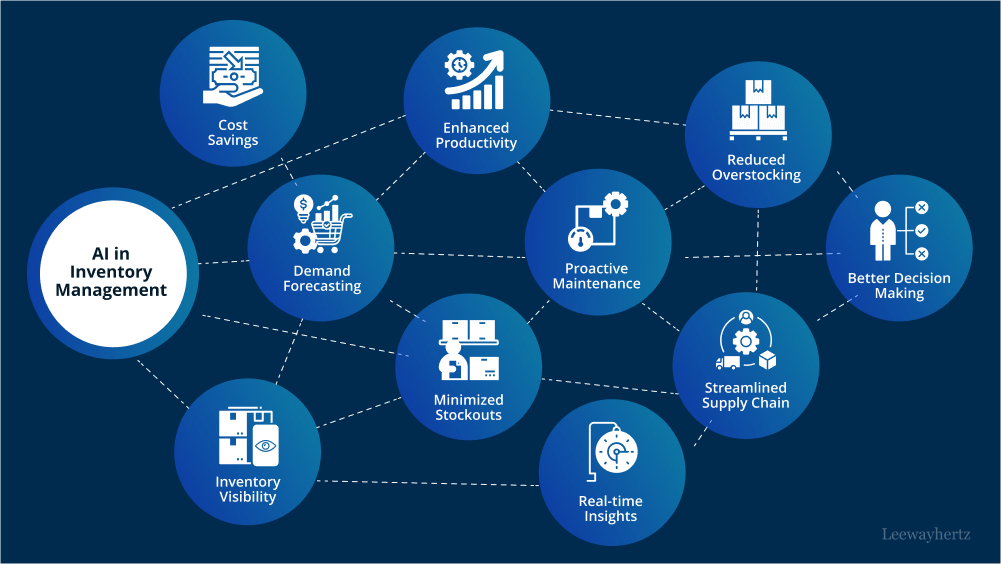
Weather-driven demand is how weather affects what people buy. For instance, hot weather boosts ice cream sales, while cold weather increases demand for heaters. Therefore, businesses need to enhance climate resilience to stay ahead. Nowadays, demand planning software can help manage inventory based on weather patterns, ensuring that businesses can meet customer needs efficiently while optimizing their stock levels.
Understanding Weather-Driven Demand
Factors Influencing Weather-Driven Demand
Seasonal changes significantly impact consumer purchasing behavior. During summer, there is an increased demand for cool drinks and air conditioning units, while winter sees a spike in sales of heaters and warm clothing. Extreme weather events, such as storms or heatwaves, can also cause sudden shifts in demand. Different regions experience different climates, and these variations influence local demand patterns. Businesses must consider these factors when planning their inventory to ensure they can meet regional demands effectively.
Historical Data and Trends
Analyzing past weather and sales data is crucial for predicting future demand. For example, historical data might show that a heatwave in July led to a surge in sales of fans and air conditioners. This information allows businesses to anticipate similar patterns and prepare their inventory accordingly. By understanding these trends, businesses can develop more accurate demand forecasts and optimize their inventory management strategies, ensuring they are well-prepared for future market fluctuations.
Challenges in Managing Weather-Driven Demand
Forecasting Difficulties
Accurately predicting the weather is challenging, and this uncertainty makes inventory planning difficult. Unpredictable weather can lead to unexpected spikes or drops in demand, complicating efforts to maintain optimal stock levels. Businesses must balance the risk of overstocking, which incurs additional costs, with the risk of understocking, which can result in lost sales. Effective demand planning requires sophisticated forecasting tools that can handle these uncertainties and provide reliable predictions.
Inventory Management Issues
Overstocking ties up financial resources and storage space, while understocking results in missed sales and dissatisfied customers. Managing perishable goods is particularly challenging, as spoilage can lead to significant losses. Balancing inventory levels to meet fluctuating demand without incurring excessive costs is a key aspect of successful inventory management. Businesses need to develop strategies that minimize waste and ensure product availability, even in the face of unpredictable weather patterns.
Software Solutions for Inventory Optimization
Types of Software Solutions
There are various software solutions available to help businesses manage their inventory. Inventory Management Systems (IMS) track stock levels and manage orders, ensuring that businesses have real-time visibility into their inventory. Demand planning software use historical data and predictive analytics to forecast future needs, helping businesses plan their inventory more accurately. Integrated Enterprise Resource Planning (ERP) systems combine inventory management with other business processes, providing a comprehensive solution that improves coordination and efficiency across the organization.
Key Features of Effective Software
Effective demand planning software offers several key features that enhance its utility. Real-time data analysis enables businesses to make quick, informed decisions based on current market conditions. Predictive analytics leverage historical data and trends to forecast future demand accurately. Integration with weather data ensures that demand predictions account for weather patterns, enhancing the accuracy of forecasts. These features help businesses maintain optimal inventory levels, reduce waste, and improve customer satisfaction.
Implementing Demand Planning Software
Selection Criteria
When choosing demand planning software, businesses should consider factors such as customizability and scalability to ensure the solution can grow with the business and adapt to changing needs. User-friendliness is crucial for ease of use and widespread adoption among staff. Cost-effectiveness balances the software’s features with the business’s budget. Selecting the right demand planning software is crucial for successful inventory management, as it impacts the business’s ability to meet customer demands and maintain efficient operations.
Integration with Existing Systems
Ensuring that the chosen demand planning software integrates smoothly with existing systems is vital to prevent disruptions during implementation. Thorough training for staff is essential to maximize the software’s benefits and ensure that all team members can use it effectively. Ongoing support services are also important for resolving any issues that arise and maintaining the software’s efficiency over time. By integrating the software seamlessly into their operations, businesses can improve their inventory management processes and enhance overall performance.
Benefits of Optimizing Inventory with Software
Improved Forecast Accuracy
Demand planning software enhances decision-making by providing accurate demand forecasts. This leads to reduced stockouts and overages, maintaining optimal inventory levels and meeting customer needs efficiently. Accurate forecasts enable businesses to plan their inventory more effectively, reducing the risk of overstocking or understocking and improving overall operational efficiency.
Cost Savings
Using demand planning software lowers carrying costs by reducing excess inventory. It minimizes waste and spoilage, especially for perishable goods, leading to significant cost savings. By optimizing inventory levels, businesses can reduce the financial burden of holding excess stock and improve their profitability. Additionally, efficient inventory management reduces the need for last-minute procurement, which can be more expensive and less reliable.
Increased Customer Satisfaction
Ensuring product availability boosts customer satisfaction. Demand planning software helps businesses deliver timely service and products, enhancing overall customer experience and loyalty. By maintaining optimal inventory levels, businesses can meet customer needs more effectively, resulting in higher customer retention and positive word-of-mouth referrals. Satisfied customers are more likely to return and recommend the business to others, contributing to long-term success.
Future Trends in Weather-Driven Inventory Management
Advances in Predictive Analytics
AI and machine learning are revolutionizing demand forecasting by analyzing vast amounts of data to identify patterns and trends. These technologies enhance the accuracy of predictions, helping businesses better manage their inventory. By leveraging AI and machine learning, businesses can improve their demand planning processes and make more informed decisions, resulting in greater operational efficiency and cost savings.
Integration with IoT and Big Data
The Internet of Things (IoT) provides real-time updates on inventory and weather conditions, offering valuable insights for inventory management. Big data analytics process this information, providing actionable insights that help businesses optimize their demand planning strategies. By integrating IoT and big data, businesses can improve their visibility into supply chain operations and enhance their ability to respond to changing market conditions.
Emerging Technologies
Emerging technologies like blockchain and automated delivery systems offer innovative solutions for inventory management. Blockchain ensures supply chain transparency, improving trust and traceability. Automated delivery systems, such as drones, provide efficient and timely delivery options, reducing the time and cost associated with traditional delivery methods. These technologies offer new opportunities for businesses to enhance their inventory management processes and improve overall efficiency.
Final Thoughts
Adopting demand planning software is essential for businesses to stay competitive. It streamlines inventory management, reduces waste, and ensures products are available when needed. Future trends like AI, IoT, and blockchain will further enhance these capabilities. Businesses should invest in these technologies to stay ahead and meet customer demands efficiently. By leveraging demand planning software, companies can improve their operations and boost overall performance.
Source: Explore






